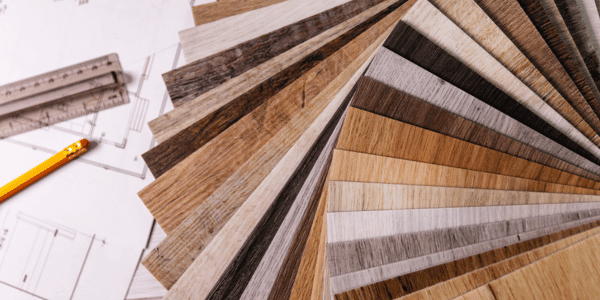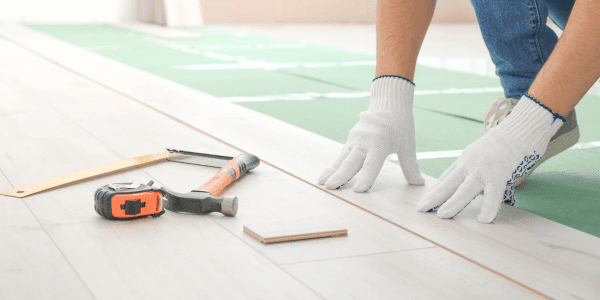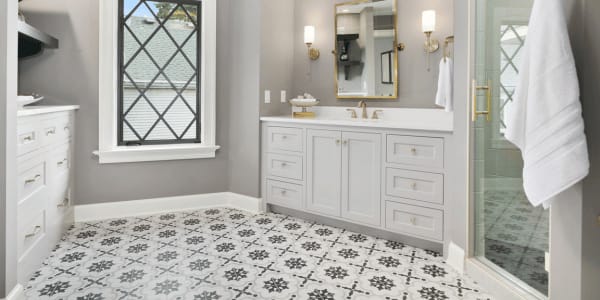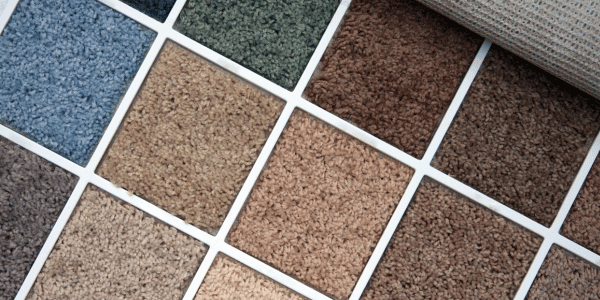How to Pick the Right Flooring for Your Home

The right floors tie a home together. They set the stage for daily living and are responsible for cushioning your falls, impressing your guests, protecting your treasured valuables, and so much more. Finding the perfect floors for your home isn’t easy, but it can be done with proper guidance. Read on to learn how to pick flooring that’s just right for you.
Why Picking the Right Flooring for Your Home Matters
Choosing the right flooring for your home is a big decision that shouldn’t be taken lightly. A costly investment, flooring can create a warm and cozy atmosphere or a cold and sterile environment. Thoughtfully selecting floors that complement your style and foster an inviting place to gather is pivotal to your home’s comfort level, perceived value, and functionality.
Factors to Consider When Choosing Flooring
Acting as the focal point, floors are often one of the most expensive portions of a home and will ultimately set the tone of each room. To choose the flooring that’s perfect for you, consider:
- Durability. Daily life looks different for each household, but we all want our floors to last a long time. Take into account how much wear and tear a particular flooring material can withstand and measure your household’s activity level to confirm it’s a good fit. You’ll want to think about water resistance, cracking, warping, breaking, fraying, and scratching.
- Maintenance and cleaning. Some floors require more TLC than others and some materials are more susceptible to stains, mold, and debris. Understand the maintenance needed for each type of flooring and what it takes to keep it top shape before moving forward. You might find that the time, money, and effort involved are more than you bargained for.
- Aesthetics. A comfortable home should have a cohesive look and feel. Ensure that the flooring's color, design, and material match or complement the furniture, walls, and other aesthetics of your space. Whether your look is modern, traditional, or elegant, pick flooring that fits the same style.
- Budget. Your budget will help you determine the types of flooring you can afford, but you might also want to think about the resale value of the material. The National Association of REALTORS® estimates a 118% ROI for homes with new wood floor installations. When determining your budget for flooring, consider if resale value is important to you now or will be in the future.
Different Types of Flooring Options
With new technology and improved manufacturing methods, there are now better and more flooring options than ever before. There are several types of flooring options that are sure to meet your needs. However, the most popular types of flooring worldwide include:
- Hardwood flooring
- Laminate flooring
- Carpet flooring
- Vinyl flooring
Pros and Cons of Hardwood Flooring

Hardwood flooring is made of timber, usually maple, walnut, or oak. There are two types of hardwood flooring, including solid wood floors and engineered wood floors. Solid wood floors are made from a single piece of wood, and engineered hardwoods are made from two or more layers of different types of wood bonded together. While they’re both common, hardwoods have their pros and cons.
Hardwood Floor Pros: Hardwoods are durable and long-lasting. Solid hardwoods can be refinished over time to extend their lifespan. Their timeless appeal has made hardwoods a go-to flooring option for centuries.
Hardwood Floor Cons: Hardwoods are usually the most expensive flooring option. Plus, depending on their environment, they’re susceptible to dents, scratches, staining, and cracking.
Pros and Cons of Laminate Flooring

Laminate flooring is made of materials, typically melamine resin and fiberboard layered together. The process of merging all the layers together is called laminating. Usually designed to look like wood flooring, laminate today comes in a variety of colors and styles, making it a top choice for DIYers and home remodelers.
Laminate Flooring Pros: This material is making a resurgence because it’s inexpensive, available in a variety of options, and easy to install and maintain.
Laminate Flooring Cons: With a lifespan of 10-12 years, laminate usually doesn’t last long. Plus, it can burn, buckle, and may not always look like the material it’s trying to simulate.
Pros and Cons of Tile Flooring

Usually made of stone, ceramic, or porcelain tiles, this flooring is pieced together with grout, a cement-based material. A fantastic choice for bathrooms, kitchens, laundry rooms, and mudrooms, tile floors are known for their water resistance and functionality.
Tile Flooring Pros: Tile flooring is tough and extremely durable. Resistant to damage, it can easily maintain its like-new disposition for more than 20 years. Plus, it requires minimal upkeep and is easy to clean.
Tile Flooring Cons: It can be expensive and tricky to install. In addition, the grout needs to be regularly monitored and cleaned for staining, dirt, and mold.
Related: Your Ultimate Cleaning Checklist
Pros and Cons of Carpet Flooring

Carpet is a type of tufted flooring made of natural or synthetic fibers, like wool, nylon, or polyester. Because of its soft and comfortable texture, it’s an ideal choice for bedrooms, media rooms, and lounge spaces. Although not as favored as other flooring options, it can still add warmth and elegance to a room.
Carpet Flooring Pros: Its softness feels good and extends a cozy vibe. Carpet can also be a low-cost flooring option and comes in counltess colors and patterns.
Carpet Flooring Cons: Its fabric construction locks in dirt and dust, which means you have to vacuum it regularly. Some fabrics can also stain easily and hold moisture.
Pros and Cons of Vinyl Flooring

Made from several layers of materials like PVC and fiberglass, vinyl flooring is often referred to as a stylish, more modern alternative to laminate. Often used to replicate wood, stone, marble, or other high-end flooring materials, vinyl is favored for its versatility, durability, and cost-effectiveness.
Vinyl Flooring Pros: Vinyl flooring comes in many styles, like tile, plank, and vinyl roll (or sheet), which makes it easy and quick to install. Plus, it’s considered extremely durable and waterproof.
Vinyl Flooring Cons: Once it’s installed, it’s difficult to remove and cannot be refinished like real wood. In addition, if it’s not properly installed, lumps and bumps could pop up and be an eyesore.
How to Increase Your Property Value After Choosing Flooring for Your Home
After considering factors, understanding the types of flooring, and weighing the pros and cons of flooring, you can more confidently choose the best flooring for your home. Now, the question of how to pick flooring transitions to how to increase your property value. Read our article to learn what small home updates can make a big difference.